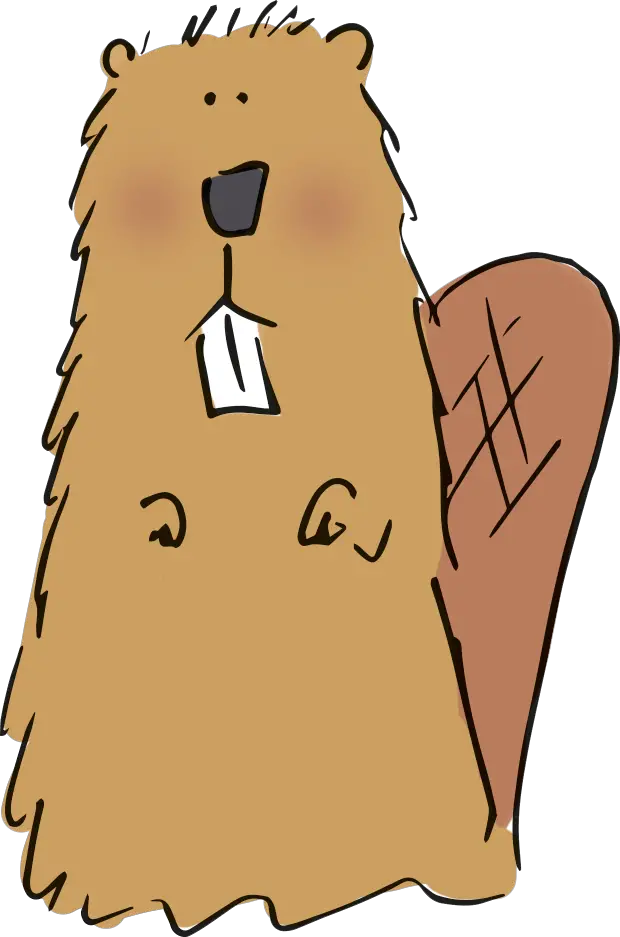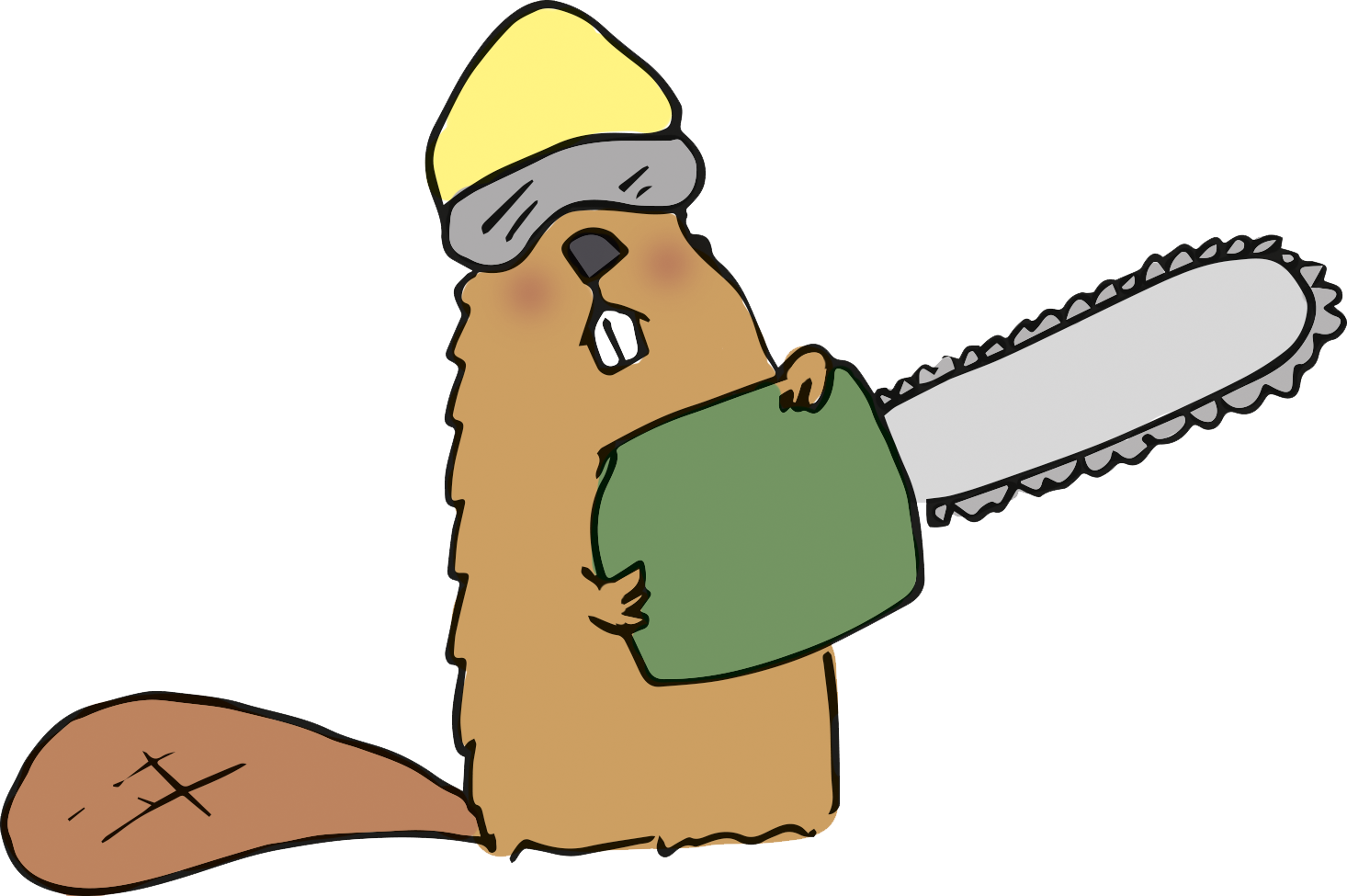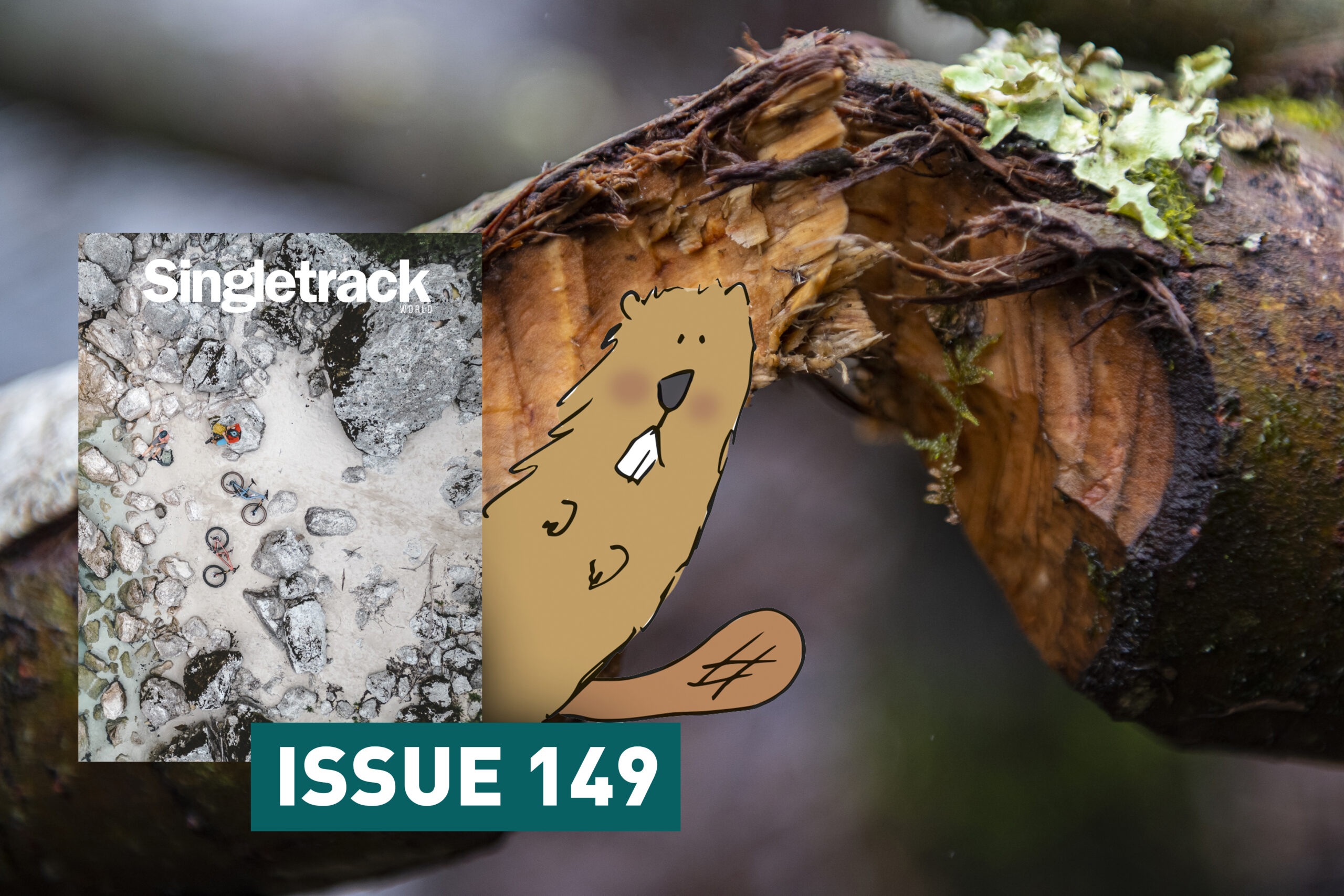Pete and Rosie rides over hills and crawl through undergrowth in search of Scotland’s thriving beaver population.

Words & Photography Pete Scullion

This Purposeful Adventure idea came about via the whirlwind of excitement and flappy hands that is Rosemary Anne Holdsworth. Rosie has been a peeper and advocate for critters long before Trash Free Trails was even a concept, and few embody ‘nature connection’ better than my good pal Rosie. Nature connection is a massive part of the TFT philosophy and a part of bringing people into the headspace whereby they feel connected to, and protective of their wild spaces.
Far too many people see the green spaces they enjoy, whether it be a park, a pond or a mountain range, as commodities. A resource to provide the photo that will get the double taps rolling in. A brief moment of validation before it gets lost in the noise of the internet. Nature connection is the opposite to this. If we take the time to slow down and actually enjoy the wild spaces we’re in, we’ll begin to appreciate their beauty and diversity and appreciate that there’s far more going on in our green spaces than we might have realised.

While it’s fair to say that Rosie and I have a particular affinity with flora and fauna, Rosie definitely has me beaten, being a veritable walking encyclopaedia of knowledge on such things. So why has she driven a few hundred miles to my patch to get a bit closer to nature?
Power Bimble
Well, everyone’s favourite animal is, of course, the Eurasian beaver. Having been reintroduced to Scotland in the catchment of the River Tay over a decade ago, they have spread quicker than most might have imagined, thanks, to a plethora of waterways and adjacent woodlands that make up an awful lot of Scotland. They have since made their way into the catchment of the River Forth, which – conveniently – is where I live.
The reintroduction of once-extinct species is rad. End of. To have it happening on my doorstep is definitely worthy of getting excited about. Eurasian beavers were down to about 1,200 individuals globally at the turn of the 20th century, but nowadays they’re marked as ‘Least Concern’ on the International Union for Conservation of Nature’s Red List. From being almost entirely extinct in the British Isles for four centuries, the current estimate of Eurasian beaver populations in Scotland alone is anywhere as high as 550 individuals. Beavers are a ‘keystone species’, specifically improving habitat for pretty much anything that’s native to Scotland beyond our bigger quadrupeds. They’re also responsible for slowing the movement of water, which has the benefit of drastically changing the effects of flooding. They really are pretty special.

In times gone by, a ride with Rosie would be usually a day out shoving bikes up the side of a large mountain and clattering back down it. The steeper and more boulder-strewn the better. In fact, Rosie takes credit for introducing me to big hill riding just over a decade ago when she dragged me up Helvellyn for the first time. Our ride out to try to get our busy eyes on some beavers would be a marked departure from this norm. With Rosie some 30 weeks pregnant at this point and, in her words, “rapidly approaching uselessness”, we concocted a power bimble that would take in the best riding of low gnadge factor and hopefully get our eyes on some beaver evidence.
Eyes Peeled
We’re very much in Aberfoyle Classic Ride territory (Issue 132), one from the lockdown times, where the sheer quantity of forest paths, fire roads and everything in between makes this a rabbit warren of options to add or subtract to according to energy levels. We take the long gravel climb out of Aberfoyle to the top of the Duke’s Pass. Normally there’s a fair view north from here, being the spot I usually head to for some astrophotography or to catch the Northern Lights. Today, though, there’s nothing but low-hanging cloud and drizzle down to the 200m mark, so views aren’t going to be something we get much of unfortunately.



Our ride over the hill takes us through the usual plantation of Douglas fir and Sitka spruce on the shoulders of the hill, with the lochsides very much home to the oak and birch that would have carpeted these parts until they were all felled for farming, industry and shipbuilding. Some of the lochsides here hold the highest European protections due to their status as true native forests. These forests are home to a wonderful array of different wildlife, from the immediately obvious, like deer, ospreys and red squirrels, to the ones you have to look a little harder for and know where to look, like otters and peregrine falcons, and a whole host of lichen and mushrooms that make the most of the damp forests.
At the top of the hill, we’re both glad of the downhill, and even here there’s more than a few options to get us out to the Achray and Venachar lochs. Rosie requests the option with the least uphill so we speed our way down the well-worn fire road that makes up part of the Three Lochs Forest Drive, eyes squinting against the mizzle than chills the cheeks.
Very Exciting Sticks
We’re soon back along the lochside, the hills beyond still hidden in the mist that swallows them whole. Rosie’s bike comes to a juddering halt as we wind our way between the towering Sitka and the marshy fringes of the loch. She’s spotted a silver birch tree that has an unusual right angle in its trunk. We dump our bikes and make our way through the ever-worsening wetness underfoot. Rosie’s eyes haven’t deceived her. This trunk has been munched by a beaver – likely when the water level was higher, going by the distance between the marks and the current water level.


With renewed excitement, we pay a quick visit to the Achray Farm goats who produce the milk that makes the farm’s excellent homemade ice cream in the warmer months – though it’s the last thing on our minds at that point… We bid the goats farewell and whizz our way over the various old stone bridges to the far side of the river.
It’s not long before Rosie’s off clattering through the undergrowth, where we happen upon an immeasurable number of chewed trees, branches, twigs… think of part of a tree – any part, any size – and there are chew marks. I’ve had no trouble keeping up thus far, but the opportunity to get eyes on critters gives Rosie super-powers that see her moving through the shrubbery like she’s on a magic carpet… “They’re crepuscular, Peter… so we might not see them”, she offers before scuttling off to investigate more beaver evidence. We’re soon finding the routes these large rodents use to exit the river, evidence of a plugged culvert pipe, the kind of work the beavers do on trees which means they to form thick, bushy, stunted crowns rather than rising to the sunlight like a normal tree. It’s all here, they must be close.

The wide eyes get a touch wider once we’re confident we’ve found their lodge. What with it being midday and them being mostly aquatic, the likelihood of us getting eyes on is low indeed. That doesn’t stop us standing for a short while in the hope that we might.
Beyond Beavers
An hour or so later, we head to the foot of the loch and come across the makings of a dam. One that looks hastily abandoned, but still all the hallmarks of beavers getting to work are here. We’ve stumbled on gold. This thin strip of silently gliding water seemed all the more important now than it did when I first rode a bike past it some years ago.

With all the chewed sticks in the Trossachs suitably documented, we take a quick run along the shores of Loch Venachar. We don’t get far before the change to broadleaves from the conifers sees a steep increase in action in the trees. Once again, Rosie forgets herself, shouts “Tits!”, points at a flock of small yellow birds, and makes haste towards them. Almost every garden bird has arrived and we’re lucky enough to be joined by three red squirrels, picking their way through the leaves before chasing after each other in a spiral dance up the trunk of a nearby Scots pine. As soon as they’ve appeared, they’ve vanished into the canopy and we’re left to enjoy the birds once more.

Once the squirrels have been and gone a few more times, the constant drizzle has given us the chills, and we make for home, happy that we’ve done what we set out to do, and even seen ‘squizzers‘. It might not have been the wildest day out, but it certainly was rewarding. Seeing the signs firsthand of a recently reintroduced species thriving was a delight, and made the place even more special than it already is. Even beyond the beavers, we were treated to a solid showing of wildlife we can sometimes take for granted. Imagine how quiet and dull our forests would be without the chirp of a busy train of chaffinches, followed by tits and the like? What a boring place that would be. Even the shrill, lonely call of a buzzard doesn’t disappoint as they spiral their way upward on whatever wind is available.

Get Connected
What this ride proves is that nature connection is whatever you make it. Just take the time to see the magic in what you might otherwise have stopped seeing as it becomes ordinary. None of this was lost on Rosie, despite a growing human doing a number on her hips. We rode as far as was enjoyable, and that’s the key. Stop, sit down, smell the earthy smells, listen to the wind in the trees and across the water, go look out your favourite animal… You won’t have to go far to get these, you just have to slow down sometimes to give yourself the chance. While a trail clean is the cornerstone of the Trash Free Trails vibe, sometimes the nature connection has to come first. You’ll give far more of a crap about where you chose to look for wildlife, and the trail clean can come once you’ve decided that whatever spot you’ve chosen is worth looking after.
Rosie’s Top Beaver Facts

• Beavers are native to the UK and all of Europe. In the UK they were hunted to extinction in the 16th century, mainly because you could turn them into REALLY good hats, but also they were delicious (stop giggling at the back please) and they have a gland in their bum which you can use to make all sorts of things, including perfume – no, really! Also they were dead easy to catch.
• They’re often described as ‘ecosystem engineers’ and ‘keystone species’ due to the way they modify and manage the habitats they live in. By building dams, lodges, canals and caches and by felling trees, they create incredible (and rare) wet woodland and floodplain wetland habitat which is vital for a whole host of other species, from tiny insect larvae and fish fry, to water shrews, otters, birds and bats. When beavers are lost from ecosystems, many of the processes which rely on them spiral into decline and conservationists have to step in and fill the gap.
• Beavers are crepuscular – meaning they’re most active at dawn and dusk.
• Beavers have in-built swimming goggles called nictitating membranes which protect their eyes under water. Like the best Bond villains, they can remain submerged for about 15 minutes and can merrily work away under water and solid ice, with their lodges only being accessible from secret sub-aqua tunnels.
• In 2009 beavers were first reintroduced to the UK as part of a very carefully considered trial at Knapdale on Scotland’s wild West Coast. The trial was a rip-roaring success and beavers have subsequently been reintroduced to various other watery bits of the UK. The beavers we found evidence of are the wild living ‘mysteriously’ reintroduced population who appeared on the Tay and have spread really effectively throughout the whole catchment.

• Beavers are totally herbivorous and eat a variety of stuff depending on the season. They won’t travel far from water, so they fell trees and engineer their environments to make their lives easier. The tree species they most like to eat are really well adapted and usually survive the felling, resprouting from the stump and creating amazingly diverse ‘mosaic habitats’ in previously uniform woodlands.

What is a Purposeful Adventure?
What if our adventures not only sustained us and our connection to nature, but also actually contributed towards a positive impact on the places we visit?
That’s why Trash Free Trails encourages you to embark on a purposeful adventure and embark on hands-on action to preserve and enhance the environment that nurtures you. That doesn’t mean your adventure should shun your personal enjoyment. Choose something that motivates and excites you, but think about how you can make a positive impact at the same time. Trash Free Trails will always suggest a trail clean, but it absolutely doesn’t have to be limited to that. A purposeful adventure can be anything you want it to be.

Who are the Trash Free Trails A-Team?
First up, they are riders, runners and roamers just like you. Second up, they are passionate about making a positive impact. They volunteer their time and effort – and more often than not go the extra mile – to represent their trails and the communities who love and use them.
They have pledged to donate their time, passion and talent to protect and promote their trails for everyone to enjoy and we couldn’t be more thankful.
If you’ve got an idea for a trail clean, would like some guidance or just want to find other TRASHMOB members in your area, take a look at the A-TEAM map on the Trash Free Trails website and get in touch with your local representative. They’ll love to have a natter. Or, check out the Do It Ourselves (DIO) toolkit: trashfreetrails.org/dio-toolkit




